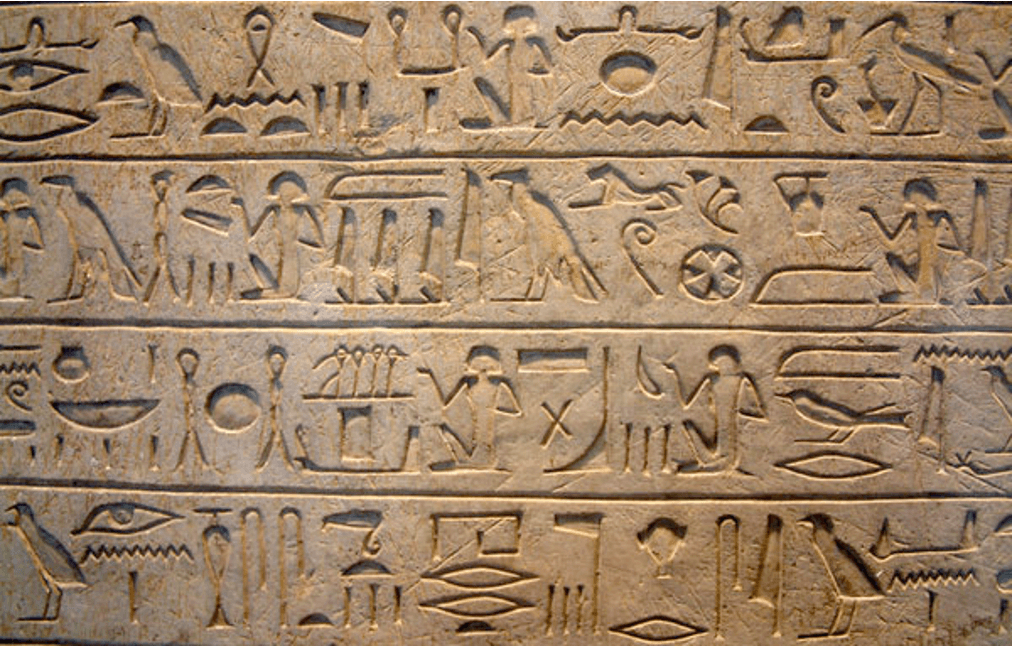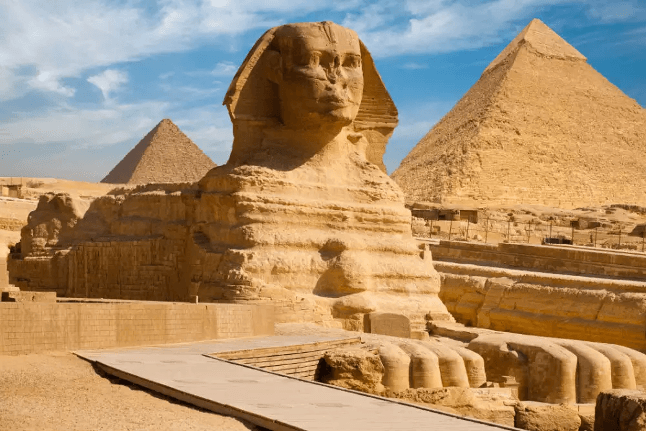The southern portion of Egypt, associated with the White Kingdom, is referred to by this regional name.
Upper Egypt
This title refers to the Kings of Egypt that were viewed as both god (usually the god Horus) and man.
Often considered to be one of the greatest pharaohs (mostly because he built so many monuments to himself and the gods), he was the last great pharaoh of Egypt.
Ramses II
This began when the Hyksos conquered Lower Egypt, leading to a time when three different groups sought after control of Egypt at the same time.
The Second Intermediate Period
He is the most well known Pharaoh of the Old Kingdom, and virtually everything that we know about him is related to his pyramid (The Great Pyramid). Legend claims that he was cruel.
Khufu
How many seasons did Ancient Egyptian society observe, and what were they based upon?
3, based on the phases of the Nile floods...Flood season, planting season (water recedes), harvest season (dry season)
This city was made the capital of all of Egypt during the First Dyansty.
Memphis
This king is considered the first pharaoh of the New Kingdom because he drove the Hyksos out of Egypt and re-established stability and prosperity.
Ahmose I
This term refers to the life-force of a person, which becomes a spirit after death, but remains connected to the body.
ka
This pharaoh had one previous pyramid finished and then built two more during the Third Dynasty. He was the first pharaoh to commission the building of a smooth-sided pyramid.
Snefru
This animal was important to ancient Egyptian culture because it was an indicator of the starting of the Nile floods.
The Sacred Ibis (also accept ibis)
This time period was plagued by tremendous upheaval and civil war. It ended when King Kashekemwy claimed authority derived from both Set and Horus. It was followed by the start of the Old Kingdom.
Second Dynasty
This leader became king at a young age, and spent most of his early years fighting in wars. Once he fully became king, he expanded Egyptian territory far into Southwestern Asia, as far north as Asia Minor.
This artifact was discovered in 1799, and became the key to helping modern scholars learn to read ancient Egyptian writing because in contained writing in three different languages, included Greek.
Rosetta Stone
This pharaoh built the first pyramid in Egyptian history (during the Third Dynasty).
Djoser
What is the name of the geographic feature pictured here, in the northern portion of Egypt near the Mediterranean coastline?

Nile Delta
This term refers to a series of powerful leaders who all come from the same family line.
Dynasty
She served as Queen Regent to Thutmose III and was known for building a Mortuary Temple and dressing as a man to help legitimize her rule.
Queen Hatshepsut
Seen pictured here, this is the most formal type of Egyptian writing. This type of writing was often used in contexts such as tombs, coffins, monuments, and in the book of the dead.

Hieroglyphics
This structure was built to protect the pyramids pictured here, and was carved out of existing rock at the site.

The Great Sphinx
Egypt is protected from invaders along the river due to these, which are caused by changes in elevation leading to rapids that are impassible for a ship.
cataracts
He united the Red and White kingdoms and was the first to wear the double crown. His reign was the beginning of the First Dyansty.
Menes
He re-unified Upper and Lower Egypt, becoming the first pharaoh of the Middle Kingdom.
Mentuhotep II
This is the location of the tombs of pharaohs and nobles from the New Kingdom. It is located in Luxor, Egypt, near the site of the ancient Egyptian city of Thebes.
Valley of the Kings
This pharaoh built the second largest pyramid at Giza (the one in the middle), even though it looks like it is the tallest (since it was built on higher elevation than the Great Pyramid).
Kafre